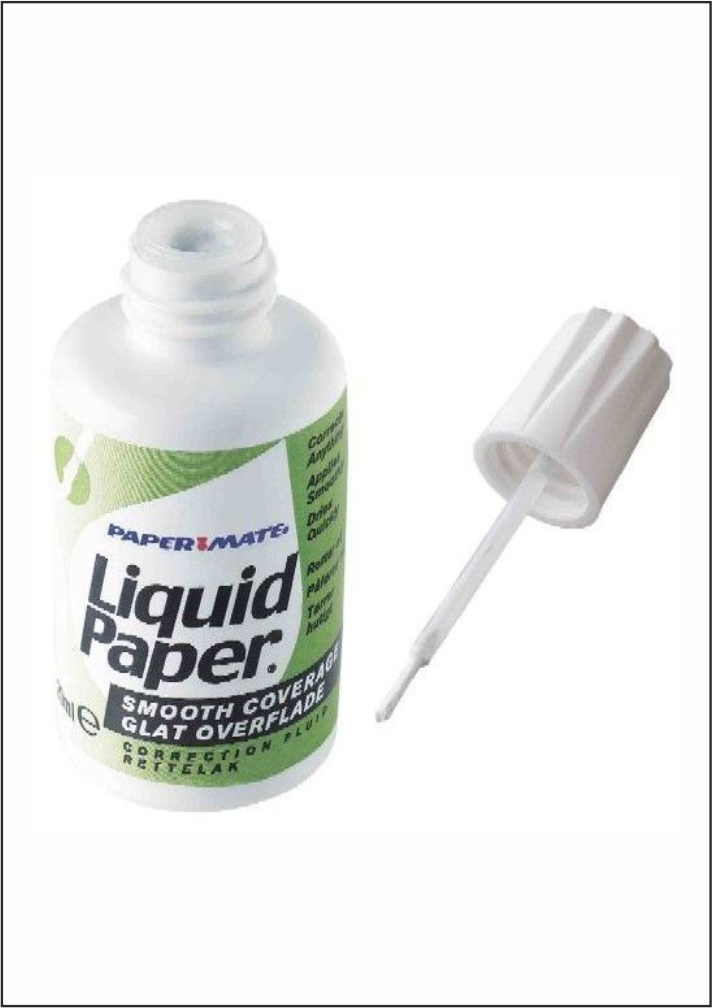


One of the first forms of universal concealer was invented in 1951 in the United States by Bette Nesmith Graham, a secretary by profession. The liquid concealer first appeared on the market in plastic bottles with a small brush inserted into the cap. However, this arrangement has a drawback: contact with the air during use favors the drying of the unused paint, which requires the frequent addition of a specific solvent. After a few years, “nib” liquid corrector tanks became widespread, in which the white paint came out only after pressing the tip of a stylus on the paper. This reduces contact with air which extends the life of the device and allows for more precise placement of the paint, but still requires the paint to dry before rewriting. Today, roller dry whiteouts are also available, derived from previous models intended for use with typewriters. They are slightly bulkier but with zero drying times, as they are not made of paint but of a very thin layer of white adhesive material, a few millimeters wide, which is unrolled on the desired sections with a dispenser.